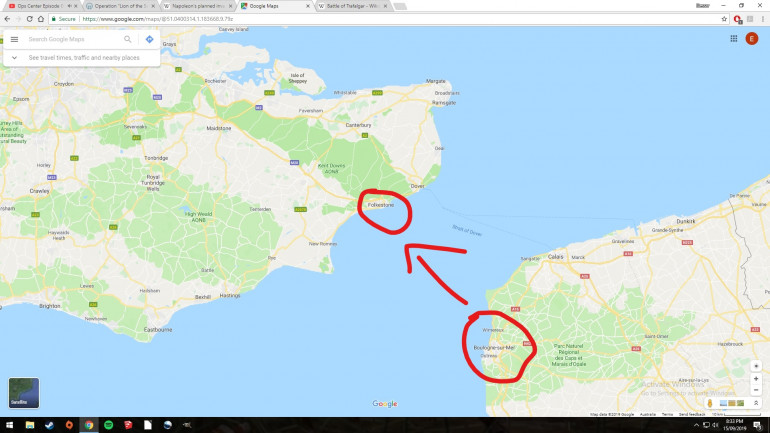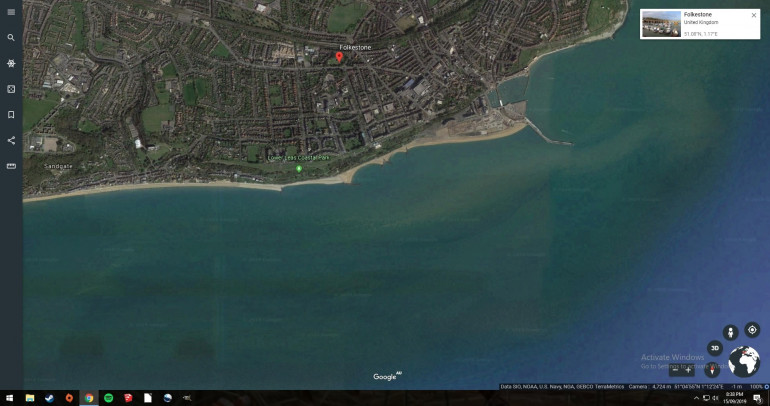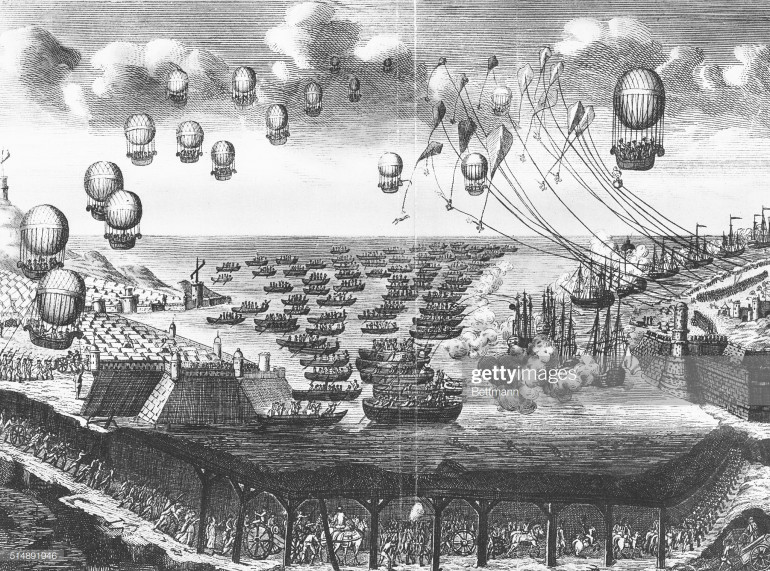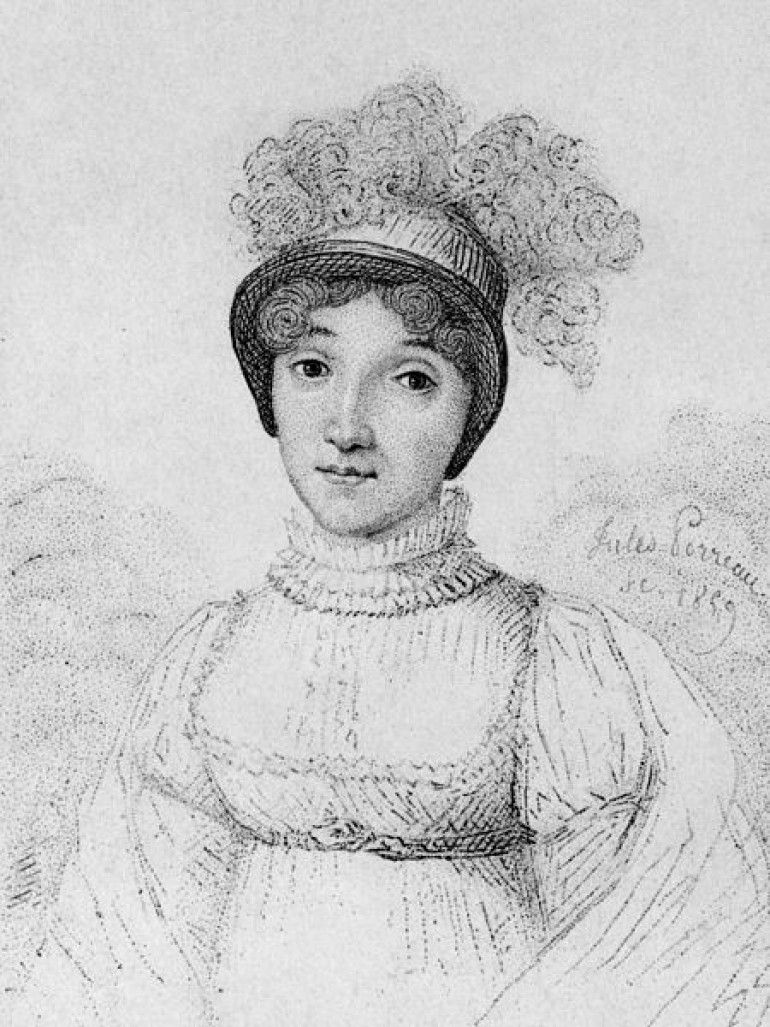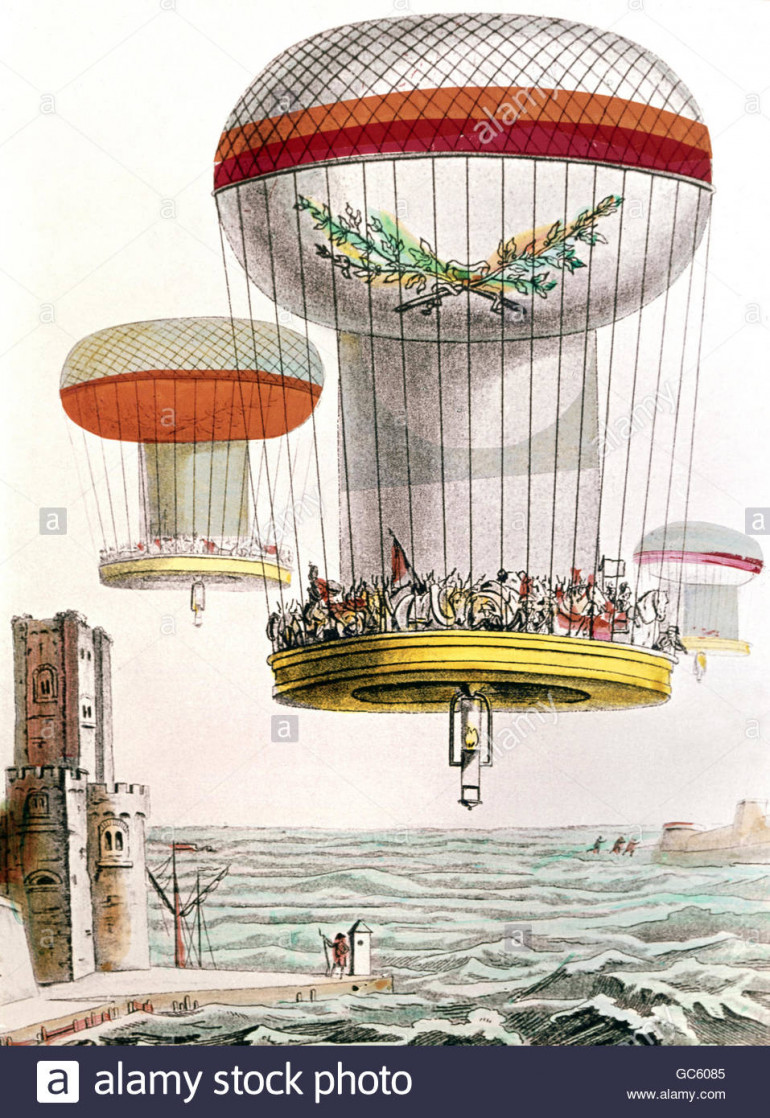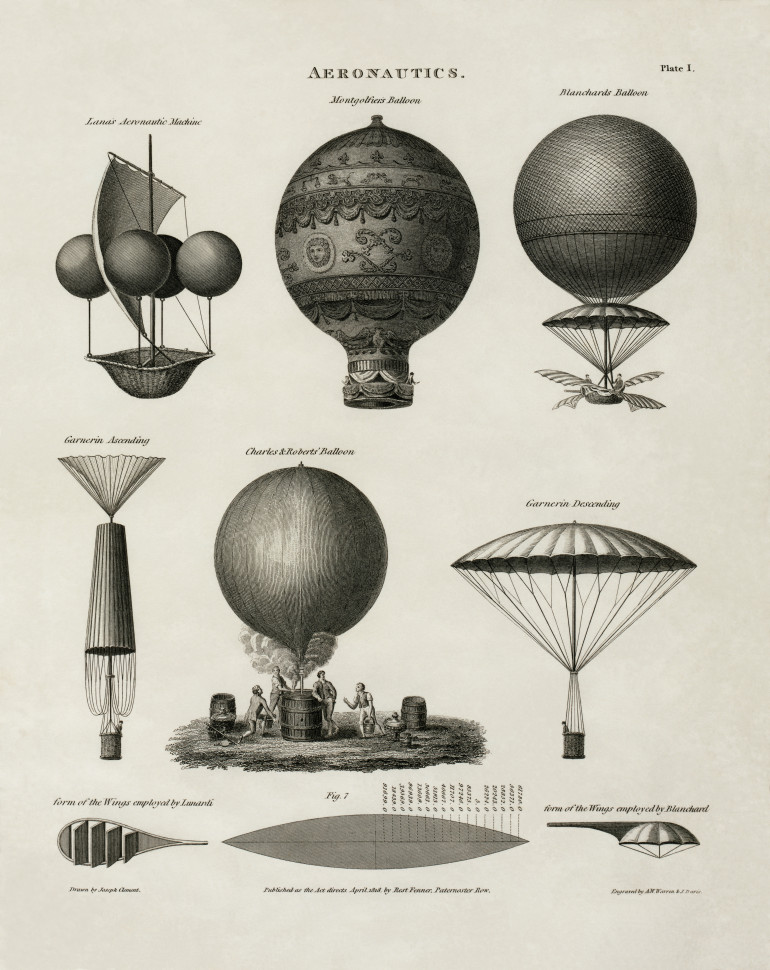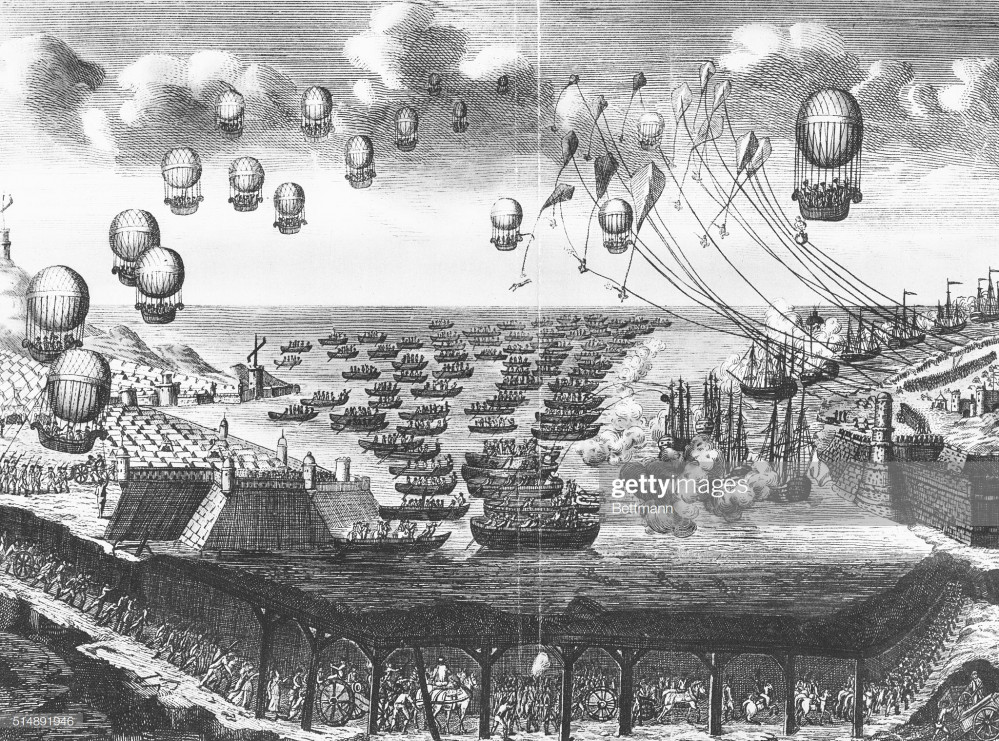
A Hypothetical Napoleonic Invasion of Britain – Operation “Lion of the Sea”
Recommendations: 12
About the Project
For about two years now I've wanted to do a "What If" Campaign based on Napoleon's Proposed Invasion of Britain in 1805. I thought I'd throw it up as a Project. The Project is in part inspired by Orsikany's "Operation Sealion" Article Series that you can find on OTT/BoW
Related Company: Warlord Games
Related Genre: Historical
This Project is On Hold
The British Defences
So Where will Napoleon be Landing?
Napoleon will be landing all over but the main force will be landing at Folkestone, close to Dover a day or a few days after the French Balloonists had landed. (that will be up to any players).
I have included a few Maps of this Below with Arrows in case anyone has forgotten where France is.
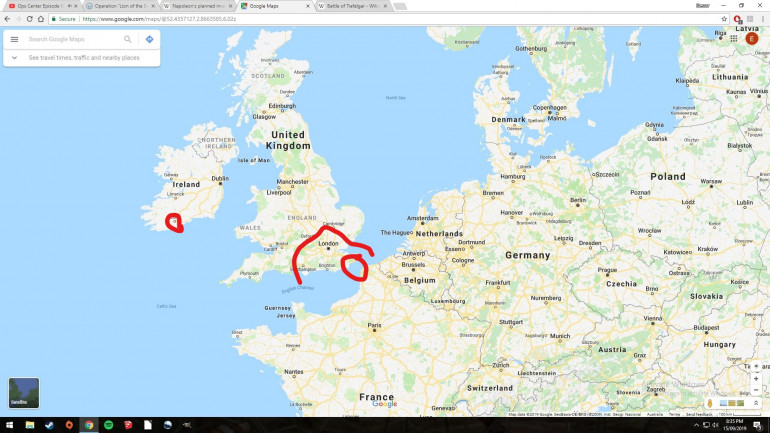 The Overall Situation. The Red line in Southern England is the "Area of Engagement" that we'll look at later, the French will be landing somewhere around Cork
The Overall Situation. The Red line in Southern England is the "Area of Engagement" that we'll look at later, the French will be landing somewhere around CorkWell now we go back to that Red Line. The British are Divided into 3 (4 if you want to get picky) Parts.
1. Those Battalions in South East England (and the channel Islands).
2. Those Battalions everywhere else in England, Scotland and Wales.
3. Those Battalions in Ireland.
4. Those Battalions elsewhere int he world (Not Included)
The Battalions in South East England and the Channel Islands
All these Battalions were in the Area and the list includes the brand new Light Infantry Regiments but not the Hussar Regiments since they were just about to transition over and weren’t there yet. All Channel Island Battalions are considered to have retreated to England leaving only token Garrisons behind.
1st Regiment of Foot Guards (2 Battalions)
Coldstream Guards (2 Battalions)
3rd Regiment of Foot Gaurds (2 Battalions)
2nd Regiment of Foot (1 Battalion)
3rd Regiment of Foot (2nd Battalion)
4th Regiment of Foot (2 Battalions)
5th Regiment of Foot (2nd Battalion)
8th Regiment of Foot (1st Battalion)
9th Regiment of Foot (2nd Battalion)
10th Regiment of Foot (2nd Battalion)
14th Regiment of Foot (1st Battalion)
18th Regiment of Foot (2nd Battalion)
23rd Regiment of Foot (1st Battalion)
24th Regiment of Foot (2 Battalions)
27th Regiment of Foot (2nd Battalion)
31st Regiment of Foot (1st Battalion)
39th Regiment of Foot (2 Battalions)
40th Regiment of Foot (1st Battalion)
43rd Regiment of Foot (2 Battalions)
44th Regiment of Foot (2 Battalions)
48th Regiment of Foot (1st Battalion)
52nd Regiment of Foot (2 Battalions)
58th Regiment of Foot (2 Battalions)
69th Regiment of Foot (2nd Battalion)
81st Regiment of Foot (1st Battalion)
87th Regiment of Foot (1st Battalion)
88th Regiment of Foot (1st Battalion)
95th Regiment of Foot (1st Battalion)
Wright’s Company, 1st Battalion, Royal Artillery
Hosmer’s Company, 1st Battalion, Royal Artillery
Wilson’s Company, 1st Battalion, Royal Artillery
A Troop, Royal Horse Artillery
B Troop, Royal Horse Artillery
E Troop, Royal Horse Artillery
F Troop, Royal Horse Artillery
H Troop, Royal Horse Artillery
Douglas’s Company, 3rd Battalion, Royal Artillery
Downing’s Company, 3rd Battalion, Royal Artillery
Dysart’s Company, 3rd Battalion, Royal Artillery
Barnes’s Company, 3rd Battalion, Royal Artillery
Manley’s Company, 3rd Battalion, Royal Artillery
Irwin’s Company, 3rd Battalion, Royal Artillery
Yorke’s Company, 4th Battalion, Royal Artillery
Hutton’s Company, 5th Battalion, Royal Artillery
Sproule’s Company, 5th Battalion, Royal Artillery
Riou’s Company, 5th Battalion, Royal Artillery
Smith’s Company, 5th Battalion, Royal Artillery
Ross’s Company, 6th Battalion, Royal Artillery
Cockburn’s Company, 6th Battalion, Royal Artillery
Meredith’s Company, 6th Battalion, Royal Artillery
Miller’s Company, 6th Battalion, Royal Artillery
Salmon’s Company, 6th Battalion, Royal Artillery
Schalch’s Company, 6th Battalion, Royal Artillery
1st Regiment of Life Guards
2nd Regiment of Life Guards
Royal Regiment of Horse Guards
1st Dragoons
2nd Dragoons
4th Dragoons
6th Dragoons
9th Light Dragoons
10th Light Dragoons
11th Light Dragoons
13th Light Dragoons
14th Light Dragoons
15th Light Dragoons
KGL1st Light Infantry Battalion
KGL 2nd Light Infantry Battalion
KGL 1st Line Battalion
KGL 2nd Line Battalion
KGL 3rd Line Battalion
KGL 4th Line Battalion
KGL 5th Line Battalion
KGL 6th Line Battalion
KGL 7th Line Battalion
King’s German Artillery – 2 horse batteries and 4 foot batteries
Those Forces in the Rest of Great Britain
These will be not only a reserve for the forces in England but also a Reserve for the Forces in Ireland that the British Player can use depending on how the war goes.
1st Regiment of Foot (3rd and 4th Battalions)
6th Regiment of Foot (2nd Battalion)
7th Regiment of Foot (2nd Battalion)
8th Regiment of Foot (2nd Battalion)
14th Regiment of Foot (2nd Battalion)
15th Regiment of Foot (2nd Battalion)
21st Regiment of Foot (2nd Battalion)
23rd Regiment of Foot (2nd Battalion)
25th Regiment of Foot (2nd Battalion)
31st Regiment of Foot (2nd Battalion)
32nd Regiment of Foot (2nd Battalion)
35th Regiment of Foot (1st Battalion)
36th Regiment of Foot (2 Battalions)
38th Regiment of Foot (2nd Battalion)
40th Regiment of Foot (2nd Battalion)
41st Regiment of Foot (1 Battalion)
45th Regiment of Foot (2nd Battalion)
50th Regiment of Foot (2nd Battalion)
71st Regiment of Foot (2nd Battalion)
72nd Regiment of Foot (2nd Battalion)
87th Regiment of Foot (2nd Battalion)
89th Regiment of Foot (2nd Battalion)
90th Regiment of Foot (2nd Battalion)
91st Regiment of Foot (2 Battalions)
92nd Regiment of Foot (1st Battalion)
Scott’s Company, 1st Battalion, Royal Artillery
Goll’s Company, 1st Battalion, Royal Artillery
Winter’s Company, 1st Battalion, Royal Artillery
C Troop, Royal Horse Artillery
D Troop, Royal Horse Artillery
G Troop, Royal Horse Artillery
Dixon’s Company, 2nd Battalion, Royal Artillery
Ramsay’s Company, 2nd Battalion, Royal Artillery
Whitworth’s Company, 3rd Battalion, Royal Artillery
Fage’s Company, 3rd Battalion, Royal Artillery
Willington’s Company, 3rd Battalion, Royal Artillery
Sowerby’s Company, 3rd Battalion, Royal Artillery
Trotter’s Company, 4th Battalion, Royal Artillery
Harding’s Company, 5th Battalion, Royal Artillery
Stehelin’s Company, 5th Battalion, Royal Artillery
1st Dragoon Guards
4th Dragoon Guards
5th Dragoon Guards
7th Light Dragoons
KGL 1st Regiment of Dragoons
KGL 2nd Regiment of Dragoons
KGL 1st Regiment of Hussars
KGL 2nd Regiment of Hussars
KGL 3rd Regiment of Hussars
Those Forces in Ireland to Repel the Invasion/Rebellion
Napoleon is going to land 20,000 Men (including his “Irish Legion”) in Ireland and opposing him are about the same number of British Troops however that doesn’t include the Local Irish Rebels and Turncoats.
3rd Regiment of Foot (1st Battalion)
9th Regiment of Foot (1st Battalion)
21st Regiment of Foot (1st Battalion)
25th Regiment of Foot (1st Battalion)
26th Regiment of Foot (2 Battalions)
28th Regiment of Foot (2 Battalions)
30th Regiment of Foot (2 Battalions)
32nd Regiment of Foot (1st Battalion)
38th Regiment of Foot (1st Battalion)
42nd Foot Regiment of Foot (2nd Battalion)
45th Regiment of Foot (1st Battalion)
47th Regiment of Foot (2 Battalions)
48th Regiment of Foot 2nd Battalion)
50th Regiment of Foot (1st Battalion)
71st Regiment of Foot (1st Battalion)
72nd Regiment of Foot (1st Battalion)
79th Regiment of Foot (1st Battalion)
81st Regiment of Foot (2nd Battalion)
89th Regiment of Foot (1st Battalion)
90th Regiment of Foot (1st Battalion)
92nd Regiment of Foot (2nd Battalion)
I Troop, Royal Horse Artillery
K Troop, Royal Horse Artillery
Rogers’ Company, 5th Battalion, Royal Artillery
Miller’s Company, 5th Battalion, Royal Artillery
Evans’ Company, 6th Battalion, Royal Artillery
Thornhill’s Company, 7th Battalion, Royal Artillery
Jackson’s Company, 7th Battalion, Royal Artillery
Pritchard’s Company, 7th Battalion, Royal Artillery
O’Brien’s Company, 7th Battalion, Royal Artillery
Gilbert’s Company, 7th Battalion, Royal Artillery
Viney’s Company, 7th Battalion, Royal Artillery
2nd Dragoon Guards
3rd Dragoon Guards
12th Light Dragoons
16th Light Dragoons
18th Light Dragoons
Getting to the Island
Ok so we've got the Skies Covered but How is Napoleon actually going to sail to England?
This is where we have to make the first of our few small changes.
First is rather simple, the same storm that scatters Admiral Nelson’s Ships at Toulon also scatters Admiral Collingwood’s Ships at Brest. For this to be the case Collingwood would have to also be maintaining a loose blockade in an attempt to lure the French out to fight and with a bit of pressure from Nelson and the Admiralty this isn’t a far fetched idea.
The Breakout
So the Combined Spanish and French Fleet manage to escape but now how do they actually lure Admiral Cornwallis (Yes he’s the brother of that Cornwallis) out of his post guarding the Channel?
Well that’s where we come to our second Historical Change.
Well it’s not really a change, rather we’re going to not change something, stay with me this will make sense.
First Let's Look at the French Plan
The French plan was to break out of Port. Head to the West Indies where they’d cause havoc and draw the British Fleets out to engage them.
Then before the British arrived the French would double back, fight their way past the Channel blockade and land forces in Ireland while Napoleon and his Invasion Army set sail from a few ports along the Continental Coast.
So what do we Need to Change?
Well what happened was Nelson initially went to the Mediterranean and began searching there for the French before figuring out they had not gone to Egypt and turned around.
All we have to do is have Nelson be a tad more stubborn (which as anyone who’s read a book on Nelson knows is not a stretch in the slightest) and have him stay in the Mediterranean with Collingwood to force Admiral Cornwallis to leave Britain and defend the West Indies.
Ok Now what?
Well now the French Fleet sneaks back to Europe and ferries the French across the Channel and to Ireland but that’s the next few articles.
There will be some kind of Alternate Trafalgar at some point since the French are cut off from all friendly ports so either Napoleon is going to have to seize a British one or the Franco-Spanish Fleet are going to be in big trouble.
What is Operation "Lion of the Sea"?
Welcome to my Project!
I’ve been slowly collecting some information on the proposed Invasion of Britain for a while now and I might as well put it in project form. A local retailer (Mighty Ape) had a sale recently and I picked up a few British minis (Three of the Warlord Peninsular British Starter Sets) which means that once they’re done I’ll finally be able to bring part of the project to the tabletop.
The Main Rule for me is that I Will not be changing History, I will not be teleportating people where they need to be, I will not be moving entire Regiments, I will not be replacing Commanders and I will not be having people act against their own Character.
In fact as you’ll see later I have a complete list of the British Army and it’s Disposition at the time of a Proposed French Invasion thanks to some truly dedicated people over at
http://www.napoleon-series.org/military/organization/Britain/Infantry/Regiments/c_InfantryregimentsIntro.html
That picture is actually taken from the period. The British media and some of the public were indeed worried about an invasion not just from the sea but from the air. Rumors of French Balloons capable of carrying entire companies in giant flying boats were common in papers at the time along with cartoons like this one.
The crazy part is Napoleon himself actually planned to use Balloons in his Invasion!
He appointed the Worlds First Air Force Commander (at least from what I can tell) one Mrs. Sophie Blanchard the wife of a famous French balloonist who had become quite famous herself and would go on to be the “Aeronaut of the Official Festivals” for both the Emperor and the King.
Her Husband had the distinction of being the First man to ever cross the English Channel by Hot Air balloon.
Okay so we’ve got Media/Public hysteria but now we actually need some Balloons so:
A) Did the French Have Balloons?
B) Could they have had Balloons?
C) How Many Balloons?
D) How Many People Could be Transported?
E) Is any Crossing of the English Channel Via Balloon Possible?
F) What Would the Military Purpose of Sending Men Via Balloon be?
G) What would the Balloons Look Like?
Okay let’s answer the Questions.
A) Short Answer. No. The French had abandoned their Hot Air Balloon Program in 1799 when Admiral nelson destroyed them all in Egypt.
B) Sure if the Balloon Program had not been abandoned and enough resource put into it the French could have had Balloons ready for the Invasion.
C) This is just pure guess work but I’m going to say Fifty. More than that is too many and less makes it not worth while.
D) This is very tricky. After some Maths and Internet Searching it looks like a Balloon of the Era could transport about five or six men. With Equipment I’m going to stick with Five Men per Balloon.
E) Yes, well it’s been done but it’s not very safe at all. Any Crossing Attempt is going to suffer a lot of Casualties.
F) Honestly mostly just Propaganda. They could possibly be used to scare the enemy into thinking more men had landed via balloon. If the French really ramped up the propaganda about an airborne invasion then the week before they launch their main attack they could drop a few hundred balloonists in fancy Balloonist Uniforms into Britain and have them dispersed around the countryside spreading rumors of thousands of balloons landing tens of thousands of men could send the British into a Panic.
G) Similar to what we think a Hot Air Balloon looks like, turns out the design has not changed much.
So French balloonists have landed in Britain but if you just land Regular French Soldiers in Regular French Uniforms you’re not going to get the biggest reaction possible.
If instead you landed incredibly ornately dressed soldiers with a lot of Prestige behind them with stropping mustaches who are armed to the teeth with very fancy weapons, that’s a different story.
If the Average British Person knows that the French Balloonists are dressed to the Nines and very elite then when they spot them, which won’t be hard since you aren’t trying to hide them, they’ll spread the word far and wide even if all they see is a small handful of men.
Landing at Night would also spread the Men out enough to create a wide area that reports can flood in from.
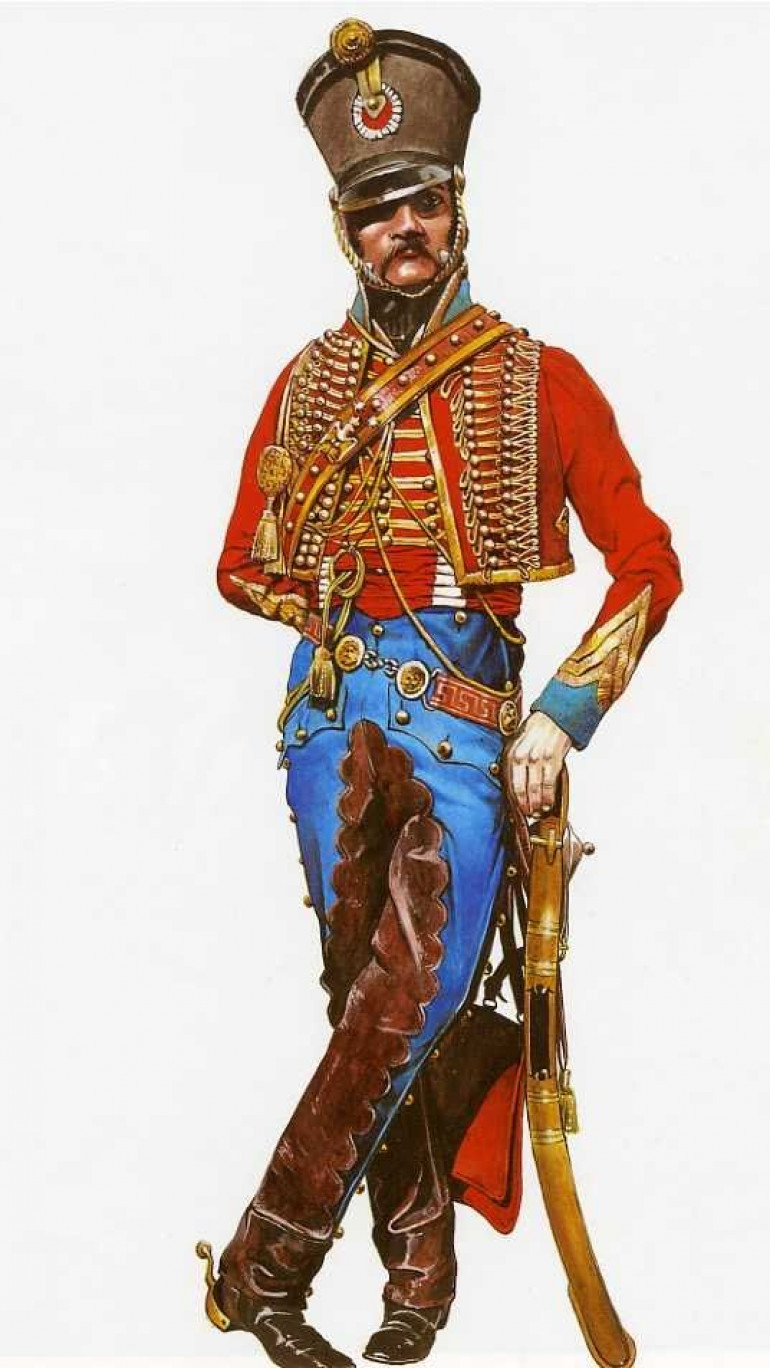 Thankfully for Me the Napoleonic Period has no Lack of Fancy Uniforms to Choose from so something along the Lines of a Hussar Uniform would fit the Bill Nicely.
Thankfully for Me the Napoleonic Period has no Lack of Fancy Uniforms to Choose from so something along the Lines of a Hussar Uniform would fit the Bill Nicely. In Fact sending Hussar's over in Balloons with their Horses following in Ships is not actually that insane an idea. Hussars were the Glory Boys of the Era. Reckless, Expensive and Arrogant pretty much sums them up which makes them perfect for a near suicidal Airborne Assault.
In Fact sending Hussar's over in Balloons with their Horses following in Ships is not actually that insane an idea. Hussars were the Glory Boys of the Era. Reckless, Expensive and Arrogant pretty much sums them up which makes them perfect for a near suicidal Airborne Assault.








































